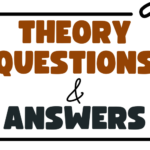Before you begin to write your lesson plan, you should first determine your objectives. Learning objectives are the foundation of your lesson plan, and they should be a priority. There are some things you can do to improve student learning outcomes by incorporating formative assessments or videos in your lesson plan. You should also think about the type of teaching material you will use in the classroom.
Objectives are the foundation of a lesson plan
Objectives are the core of any lesson plan, and they should include homework assignments, topics to cover, and methods to teach specific topics. In addition, the lesson plan should be interactive and engaging to ensure that student learning is facilitated. Use multimedia elements such as videos, graphics, and short clips to enhance learning.
Objectives should be measurable and based on current educational standards. A simple objective may include, “The students will learn X.” Another objective might state, “Students will observe all 50 states.” A lesson with a SMART objective should be realistic, achievable, and time-based.”
Creating a lesson plan is a vital skill for any new teacher. It is a process that takes time to master. A solid lesson plan should include clearly stated learning objectives, a method to deliver the lessons, and a metric to measure student progress.
Prioritizing learning objectives
When preparing a lesson plan for a student teacher, it is best to prioritize learning objectives. This is because it will help you make adjustments in your plan as necessary. It will also help you develop an effective timeline that will allow you to be flexible and adapt to your classroom environment. An effective lesson plan will help you deliver a successful lesson for your students.
Learning objectives should be explicit and measurable. This is critical because the students should have a clear understanding of what they are being taught. It is also important that these objectives stick with the students.
Including formative assessments in a lesson plan
Using formative assessments in your lessons can be an important step in developing a lesson plan. These assessments can be simple and fun and can help you identify learning gaps. One effective form of formative assessment is to use polls. Asking students to answer one simple question about something they’ve learned can help you gain instant feedback.
Formative assessments help teachers plan future lessons and help students drive their own learning. When you use them correctly, you can create a personalized learning environment and make adjustments to your teaching. This will not only help your students learn more, but will also help you improve your teaching skills and help them grow.
Including videos in a lesson plan
Incorporating videos into your lesson plan for student teachers can be an excellent way to improve student engagement. A lesson plan that incorporates video is more effective when students have something to say about what they watch. This will encourage them to be active listeners, readers, and reacters. These strategies can also help you develop students’ critical thinking skills.
Using videos to teach a topic requires careful consideration. First of all, they must not replace the content of your lesson plan. The video should support the topic or unit of study. In addition, you should develop a list of prompts for students to use as they watch the video. You should also provide key points that they can note and use as topics for discussion afterward. You should also plan for different devices and multiple access points, especially when using multiple videos in your lesson plan.
Organizing a lesson plan
Before creating a lesson plan, consider the goals and objectives of your lesson. The objectives should align with the adopted standards-based curriculum and be based on the type of information you want to impart to your students. In addition, the lessons should address the students’ learning styles and provide differentiation through different activities and assessments. Also, they should follow some general principles, such as the need for a clear beginning, middle, and end.
Before beginning your lesson plan, make sure you have all the required materials ready. These can include overheads, lecture notes, manipulatives, warm-up activities, and materials from the media center. It is a good idea to check out or order the items you need ahead of time, so they are ready for the lesson. It is also important to allow enough time to adapt your lesson plan to unexpected circumstances. For example, you might decide to make a change in the content or the amount of time students should be given to complete the task.




